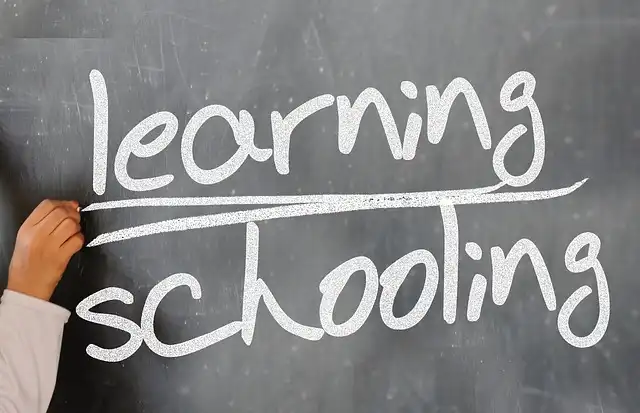Community colleges in the lurch after WIOA bill founders

A bipartisan effort to update the nation’s workforce development law is dead, depriving hundreds of community colleges of increased funds and opportunities to cut through the red tape surrounding short-term job training.
Teams like the National Organization of Labor Force Boards and the American Association of Area Universities say the fatality of the Stronger Labor force act won’t eliminate their programs, but nevertheless they shared worries regarding just how an absence of reauthorization makes their programs vulnerable. They are trying to stay hopeful that reauthorization will be a priority for this Congress.
Because 2020, the Strengthening Area Colleges Training Give program has given specialized funding for training programs at community colleges. Most recently, the Labor Department granted $65 million to 18 universities. With 5 rounds of funding, more than 200 universities have actually received a complete $265 million.
Usually, colleges obtain funds by entering a contract with a neighborhood workforce board. The procedure begins with local labor force advancement companies determining crucial trades or accreditations that remain in high need among their area. Then the board picks an approved training service provider and contracts with them to educate a collection variety of workers.
A bipartisan initiative to update the nation’s labor force advancement regulation is dead, depriving thousands of neighborhood colleges of raised possibilities and funds to cut through the red tape bordering temporary task training.
Till after that, Inside Higher Ed called Baime to discuss the expense and what it means for community universities and short-term workforce training. Here are three crucial obstacles he said stay up until WIOA obtains an upgrade.
The expense’s sponsors were hopeful that the bipartisan legislation to reauthorize the Workforce Advancement and Opportunity Act would certainly pass Congress prior to the end of the year, as it was included in a broader spending bundle to fund the federal government. Members of the Residence and Senate education and learning and labor force boards worked for the last two years to upgrade the labor force expense, which expired in 2020. Commonly, universities get funds by getting in an agreement with a local workforce board. The process begins with regional labor force advancement firms recognizing vital trades or qualifications that are in high demand amongst their neighborhood. The program counts upon an evaluated model of community universities working straight with companies, in control with the federal workforce system.
The Stronger Workforce for America Act would have provided community colleges automatic qualification to become part of training contracts with neighborhood labor force growth workplaces, presented a new government grant and secured several existing programs from possible spending plan cuts in the brand-new.
“As the session waned, it was clear that getting a costs established in 2024 was going to be extremely tough,” David Baime, senior vice president of government connections at AACC, said in a declaration. “Nevertheless, we are happy for WIOA’s champs and really positive that a reauthorization will certainly be enacted by the following Congress.”
Leaders on the Home education and workforce board had actually claimed the Stronger Labor force for America Act would produce “transformative adjustment” for the American workforce, pointing to exactly how WIOA helps American workers equal an ever-changing task market and gain high-demand skills. Reauthorizing WIOA was a top concern for Rep Virginia Foxx, the North Carolina Republican that chaired the board up until December.
“SCCTG is a truly vital program for us. The program relies upon an examined model of community universities working directly with companies, in sychronisation with the federal workforce system. It’s not moneyed at the level we would certainly such as, yet it shows an appropriate prioritization of the function that area universities play in task training,” Baime said.
“The administrative nature of WIOA has actually made for some head of states not being as involved as they could be,” Baime said. “In these instances, they simply do not discover it beneficial to invest a lot of time in their neighborhood workforce boards.”
Yet the grant program was never ever officially accredited. That means there is no mandate needing Congress to set aside a certain quantity of funds each year, and the grant depends completely on campaigning for from particular legislators.
Participants of your home and Us senate education and learning and labor force committees benefited the last 2 years to upgrade the workforce bill, which ran out in 2020. Your house strategy overwhelmingly passed last springtime, and the Us senate released a draft strategy over the summer season. The Us senate costs didn’t move on, however vital legislators in your home and Senate reached a compromise in late November to upgrade WIOA.
Congress looked set to pass the bipartisan expense to update the labor force advancement law yet after that scrapped the regulation at the last minute. That failure leaves money on the table for neighborhood universities.
Presently, any kind of training company– be it a community university, a company or a for-profit technological institution– must satisfy certain efficiency requirements in order to get WIOA dollars. Concerning $500 million is available for job training vouchers each year.
Another would have specified that traditionally wide H1-B gives, which utilize the revenue from skills-based visas to train American workers, have to be utilized to upskill people displaced of their present duties by innovations like AI. Workers would certainly have gotten up to $5,000 with that modification.
Even if neighborhood universities did instantly qualify, Baime stated, the financing set apart particularly for training programs is limited, and competitors with other companies like for-profit technological organizations and employers is steep.
A couple of other, much less direct funding boosts were also shed when the regulation died. One policy would have called for 50 percent of all WIOA funds to be invested on training instead than management fees, leading neighborhood labor force boards to invest more in contracts with outdoors carriers.
The costs’s enrollers were enthusiastic that the bipartisan legislation to reauthorize the Workforce Development and Possibility Act would pass Congress prior to completion of the year, as it was consisted of in a larger investing plan to money the federal government. When Republicans voiced opposition to the omnibus investing bill just over 24 hours prior to the government closure due date, legislators turned around training course. They rather passed a pared-down continuing resolution to fund the government via mid-March, and WIOA reauthorization didn’t make it.
“The significance of labor force education and learning is valued by lawmakers throughout the Hill,” he described.
1 community colleges2 Stronger Workforce act
3 workforce development
« Tuition reimbursement cannot be factored into wage garnishment, DOL saysDartmouth basketball players withdraw labor union bid »
